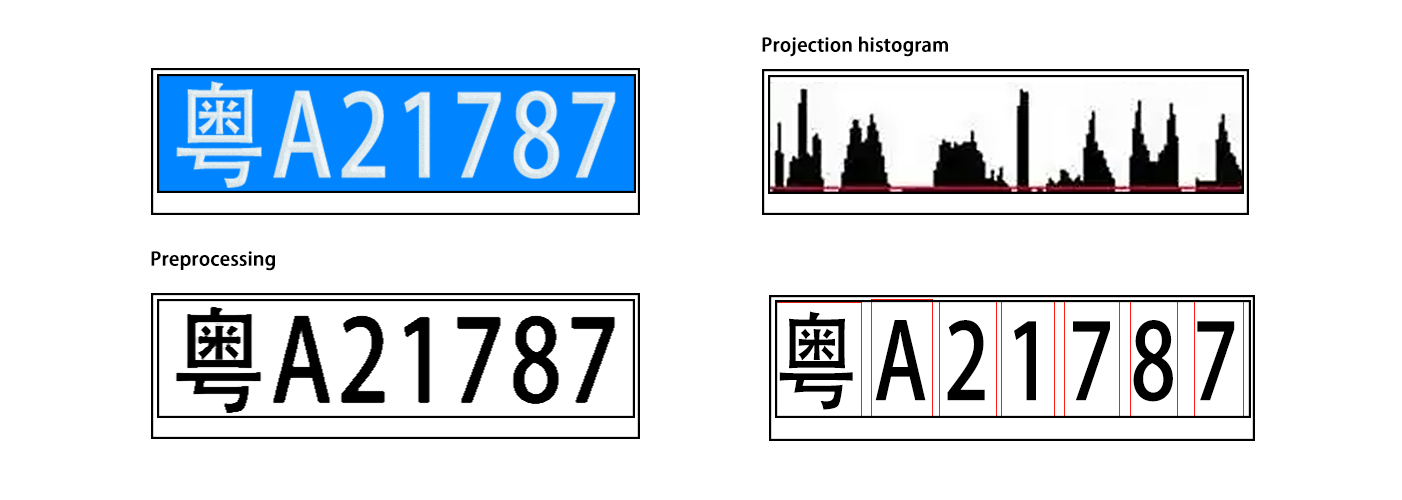Machine Vision in License Plate Recognition
In the age of rapid tech advancement, machine vision has become a core of intelligent systems, revolutionizing industries by enabling machines to "see" and interpret visual data. Among its applications, license plate recognition (LPR) is one of the most practical, turning license plate capture into a tool that streamlines traffic management, enhances security, and drives smart city development.
1. The Principle of Machine Vision in License Plate Recognition
Image Acquisition
As the foundation of LPR, image acquisition uses high-definition cameras (2–8 megapixels) and specialized sensors installed at key locations (intersections, parking entrances). These devices are calibrated for shutter speed, aperture, and ISO to capture clear vehicle images, ensuring license plates are distinguishable for subsequent processing.

Image Pre - processing
Raw vehicle images often have noise, uneven brightness, and low contrast. Pre-processing fixes this via grayscale conversion (simplifying data while preserving plate structure), noise reduction (Gaussian/median filtering), and contrast enhancement (histogram equalization), making plate details more prominent for location.
License Plate Location
This step isolates the license plate from vehicle images using its unique features: shape (standard rectangle with fixed aspect ratio), color (e.g., blue-white for civilian cars in China), and texture. Edge detection (Canny) and color segmentation work together to crop the plate area from irrelevant elements.

Character Segmentation
To prepare for recognition, character segmentation splits plate characters into individual images. It uses horizontal projection (vertical character range) and vertical projection (detecting gaps between characters). Skew correction is applied for tilted plates, ensuring accurate separation of each character.
Character Recognition
The core step uses Optical Character Recognition (OCR, template-based comparison) or deep learning (CNNs, auto-learning from datasets). Each segmented character is processed, output as text, and combined into a complete license plate number.

2. Applications of Machine Vision in License Plate Recognition
Traffic Management
LPR systems at intersections and highways monitor vehicles, recognize plates, and match with violation data. They capture plates, record violation time/location, and send info to management platforms, reducing manual work and improving road safety.
Parking Lot Management
LPR automates parking operations: cameras capture plates at entrances (recording entry time, opening barriers) and exits (calculating duration, generating fees for cashless payment). This cuts waiting times and eliminates ticket-related issues.
Toll Collection
In highways and tunnels, LPR enables non-stop toll collection. It recognizes plates, checks registration, deducts fees automatically for registered vehicles (reducing transaction time to <1 second), and generates bills for unregistered ones, easing congestion.

Security and Surveillance
Integrated into public area cameras, LPR scans plates and matches with watchlists (stolen cars, suspect vehicles). It alerts security personnel on matches, enabling rapid response and enhancing public safety.
3. Advantages of Machine Vision in License Plate Recognition
High Efficiency
Machine vision processes hundreds of images per minute, with recognition times of 0.1–0.5 seconds per vehicle. Unlike manual operators, it maintains consistent throughput, cutting costs and improving service.
High Accuracy
Advanced algorithms and AI enable over 99% accuracy in ideal conditions, and >95% in challenging environments—far higher than manual recognition (5%+ error rate). This ensures reliability in toll collection and security.
24/7 Operation
Equipped with low-light sensors and weather-resistant cameras, LPR works non-stop. Infrared/LED lighting aids nighttime capture, and enhancement algorithms reduce weather impact, ensuring uninterrupted operation.
Data Management and Analysis
Recognition results (plate number, time, location, images) are stored in a centralized database for fast search. Data is analyzed to identify trends—optimizing traffic signals, adjusting parking pricing, or tracking suspect vehicles.
4. Challenges and Solutions in Machine Vision - based License Plate Recognition
Challenging Environments
Extreme weather (rain, fog, glare), lighting changes, and worn plates reduce accuracy to <80% in severe cases, affecting reliability.

Complex Vehicle Scenes
Occlusion (blocked plates), tilt/distortion, and multi-plate scenarios disrupt recognition, as traditional algorithms struggle with non-standard inputs.
Solutions and Improvements
Hardware optimization (HDR cameras, infrared lighting) and algorithm enhancements (adaptive noise reduction, haze removal) address environmental issues. Skew correction, occlusion handling, and deep learning (region-based CNNs) tackle complex scenes. Regular maintenance and updates keep systems accurate.
5. Future Trends of Machine Vision in License Plate Recognition
Deep Learning and AI Integration
Advanced models (transformers, few-shot learning) handle tough cases (worn plates). End-to-end LPR systems (single neural network for all steps) simplify design, and AI predicts vehicle behavior for proactive management.
Multisensor Fusion
LPR will integrate LiDAR (3D vehicle data), radar (speed/distance), and thermal cameras (dark/smoke conditions). Data fusion reduces errors, making systems more robust for off-road and emergency use.
Cloud - based Services
Cloud-based LPR offers scalability (add cameras without hardware upgrades), remote management, and cross-system integration (sharing data with smart city platforms). Cloud storage supports long-term analysis for large-scale applications.
6. Conclusion
Machine vision is the backbone of modern LPR, solving manual system pain points with speed, accuracy, and 24/7 operation. Advancements in deep learning, multisensor fusion, and cloud tech overcome challenges. As smart cities grow, LPR will play a key role in connecting vehicles, infrastructure, and users, shaping intelligent transportation.


